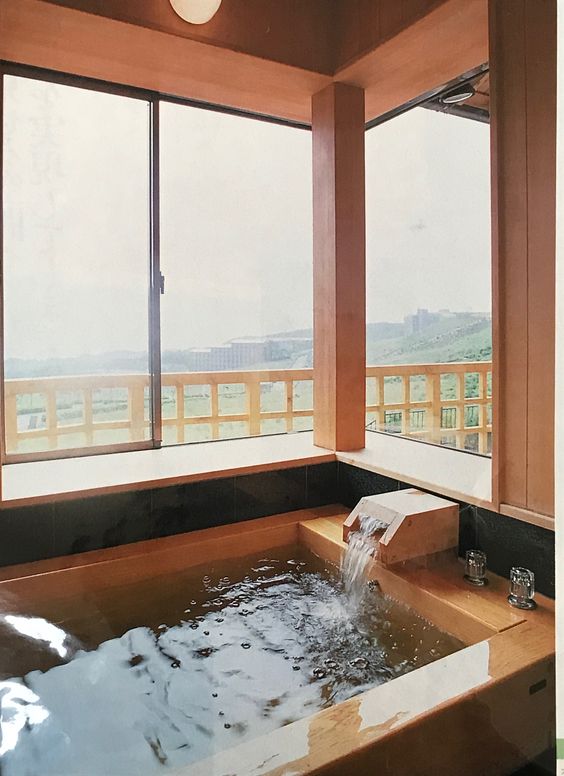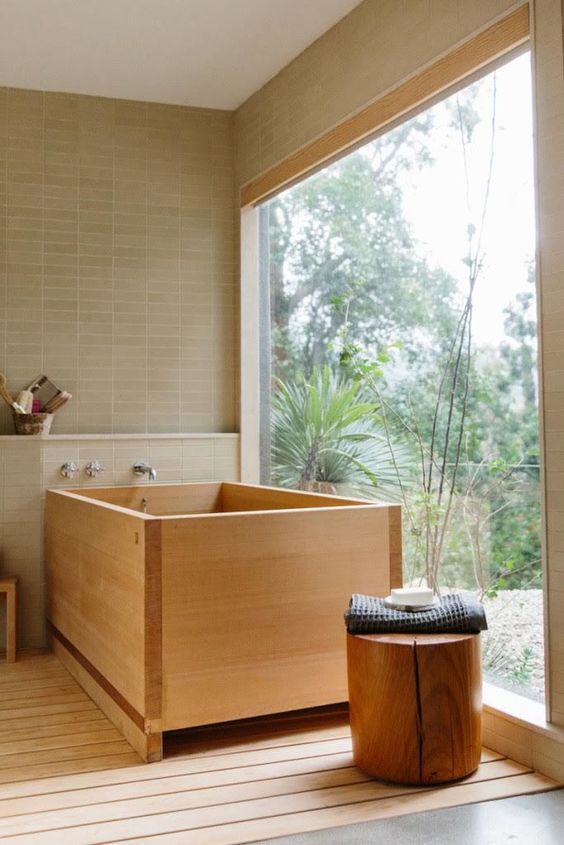Andraursuta.com – A Japanese bathroom is a sub-room with a high humidity level. It’s constructed with PVC tiles and is waterproof. It’s typically 5 to 8 square meters in size and is divided into two separate areas: the first zone is for washing and includes a basin, shower, small stool, soaps, and a toilet. You might also find an anti-mist mirror in this bathroom. The second zone is used to shower and clean the skin.
Comfortable Traditional Japanese Bathroom
Until the mid-20th century, the Japanese took bathing very seriously. While modern Japan is increasingly becoming more convenient, it retains many traditional elements. For example, toilets are automated, and some hotels and airports have them. Some vending machines even feature automatic doors. Still, you may be surprised to see an older Japanese bathroom with squat toilets. These bathrooms are considered less pleasant than western bathrooms and can be difficult to maintain.
The Japanese use a calming color palette in their bathrooms. This can include darker shades of blue and brown. These can be combined with natural stone or wood to create a naturally luxurious look. Walls and floors can be made of stone or marble tiles. Adding pebbles to the floor is another popular way to decorate your bathroom. In addition to using a neutral color palette, Japanese bathrooms tend to have many other features that make them stand out.

The Japanese use a reclining stool to remove their wet clothes before dressing. This saves water by preventing the tub from filling up with water. In addition, Japanese bathrooms have separate shower rooms. The Japanese are also known for separating the tub and toilet. Unlike the rest of the world, the bathtub and toilet in a traditional home is located in separate rooms. However, the bathtub and shower space are still separate spaces.
Unique Japanese Bathroom in Minimalist Design
The Japanese bathroom is unique in its minimalistic design. It has a cloakroom area, where clothes can be stored and rubbed before entering the bathtub. These areas are usually located behind the shower. They can be closed off by a curtain for privacy. One of the major features of a Japanese bathroom is the lack of a bathtub caddy. Instead, the toiletry holder is used for showering, and the cloakroom area is designed with a toilet.
The Japanese bathroom is full of natural materials. The floor and sliding doors are made of solid wood. A stone trough is filled with shingles and planted. A bathing pool is lined with stone. The walls and ceiling of the bathing pool are covered with stone tiles. A wooden faucet is a popular choice. A bathroom that’s both modern and traditional will be a pleasure to spend time in. And with such a luxurious bathroom, the whole family will enjoy it.

While there are many differences between a traditional Japanese bathroom and a modern one, there are some fundamental similarities between them. In terms of space, a Japanese bathroom is typically short and steep-sided. Unlike its American counterpart, a modern Japanese bathroom is not usually long, but it is a great place to spend a relaxing day. A Japanese bathroom is the perfect choice for those who are sensitive to color, texture, and style.
Creating a Modern Japanese Bathroom
In a Japanese bathroom, you’ll find separate bathing and showering areas. In the West, the toilet is similar to a toilet in the United States, but it’s usually electronic and features a heated seat. Despite these differences, a Japanese bathroom still has the traditional toilet, but it’s not uncommon to find a Western-style toilet in a metropolitan area. It’s definitely worth checking out.
A Japanese bathroom is very spacious and airy, and the light-colored rood can make it seem more airy and spacious. A round tub is a focal point and a calming water feature outside can add to the experience. In a modern Japanese bathroom, the walls and flooring are made of stone or marble. The wood and stone are common in a traditional Japanese bathroom, and they have the added benefit of being environmentally friendly.

A Japanese bathroom is often very simple. Typically, the bathroom is very compact and has little to hold. The Japanese bathroom may have very few shelves, making it a wet room. Whether it is a wetroom, you can find the necessary items in a Japanese bathroom. The shower caddy is ideal for holding your shampoo, razor, and loofahs. In addition to a shower caddy, you can also purchase a shower caddy to keep everything organized.
